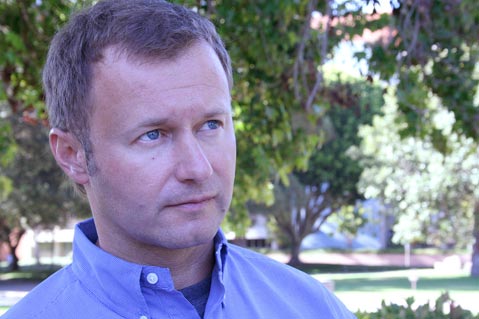Predicting the Path
UCSB Researcher Develops Real-Time Forecast of Oil Movement from Deepwater Horizon Spill

A new model developed by a UCSB researcher to predict oil movement from the Deepwater Horizon accident was published in the prestigious journal Science on September 2. Igor Mezic, professor of mechanical engineering at the University of California, Santa Barbara, has been doing fluid dynamics research for more than 10 years. One of his recent projects involves forecasting complex, nonstationary dynamical systems and its application in engineering and natural science.
Shortly after the Deepwater Horizon blew up in the Gulf of Mexico, it occurred to Mezic that he could use his research experience in related fields to help with the cleanup process. “I was watching the media coverage on the spill around May 10,” recalled Mezic, “and I felt there could be a better set of theories to predict how oil would move.” He and his research group quickly set out to develop a new model that forecast where and when the spilled oil would wash ashore.
As rising oil forms vast slicks on the sea surface, its movement is constantly influenced by various ocean factors. Patrick Hogan from the Naval Research Laboratory in Mississippi, one of the Mezic’s collaborators, provided an ocean model for the assessment of variables like wind force, current, and temperature. Wind force, according to Mezic, is especially a big factor.
At the beginning of June, Mezic was flown down to the Gulf of Mexico and worked side-by-side with Advanced Cleanup Technologies Inc. (ACTI). “We were able to do a three-day real-time forecast on an hourly basis,” said Mezic. The predictions were accurate to within a couple of miles of NOAA’s assessment of the oil slicks’ locations. This fast forecast of the oil movement can improve the efficiency of the cleanup efforts as well as provide well-timed information for people who may be affected by the spill.
While the situation of the Deepwater Horizon spill is mostly under control, the fluid model Mezic developed can be applied to other research projects such as optimizing energy efficiency in building systems and predicting the movement of ash spewed from an erupting volcano.



